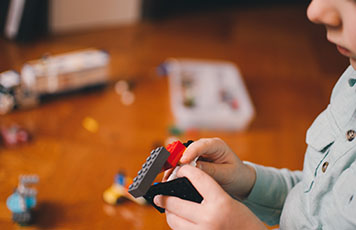Shaping understanding with Life Story Books
12 February 2020


Earlier this month in the Guardian, the vital role of “Life Story” Work was highlighted and championed in an article you can read here. Tim Taylor, Care for Children Group Training Manager, shares why Life Story work is so important to Care for Children’s model, how it can positively impact the lives of looked-after children, and how you could explore its benefits if you care for foster or adopted children.
What is “Life Story” work?
Every child or young person is unique with a “life story” belonging to them.
However, children and young people who are placed in foster-care care or adopted may have little understanding of why they don’t live with their birth parents, the reasons for them entering care, and events that took place in their early lives. This can have a negative impact on their emotional wellbeing and self-esteem.
Conversely, ‘Life Story’ work can help children in care begin to understand and accept their personal history, helping to create a secure base to explore their past, present and future.
‘Life Story’ work at Care for Children
When a child moves from an institution to a foster family, their journey has often not been straightforward. At Care for Children, we place a high priority on training foster carers to develop a secure base for the children in their care. We incorporate ‘Life Story’ work into all of our training programmes as one of the ways to do this. We train social workers, or family placement workers, to be able to develop life story books, which can be a complex and sensitive task. It’s important to capture a child’s journey, but the priority is always to protect the child, helping them to develop a more secure sense of their identity. Family Placement workers are then empowered to work with foster parents to help them maximise the impact of the work with their children.
Throughout the training program, the sessions on “life- story” work are always among the most fruitful and eye-opening. It always gives us, and trainees, a real insight into how a vulnerable child’s journey is understood and treated, and enables us to make huge steps forward in our work. We want children to flourish in their new families, so everything we can do to equip foster families to provide the best long-term care for children is at the heart of our work.
“We want children to flourish in their new families”
The Principles are always true
‘Life Story’ work has been developed for children who have been adopted, are in foster care or have experienced early childhood trauma. However, many of the principles and tools that have been developed are applicable to any parent in strengthening identity of and attachment with their child. Most parents will generally speak to their children about their memories of them as babies and toddlers etc. These memories are often supported by photos, pictures, diary entries and videos. This is one very natural example of how parents are often using the principles of ‘Life Story’ work without thinking about it.
However, there are other practical and FUN ways to build on a child’s sense of identity. Below are 3 easy and accessible ways to engage your children in this. WARNING – There will be lots of laughs along the way!
#1: Life Story Jenga
Method: Create cards with different questions about a child’s early childhood for the child to ask or the parent to answer. Colour code the cards and Jenga blocks for different themes.. Play like a regular game of Jenga but read, answer and discuss a question that corresponds with the colour block they remove.
Outcome:These questions spark a lot of conversation, help build rapport, encourage self-expression and help the child to learn about special details from childhood expressed positively by their parent.

#2: The Memory Jar
Method: Get a glass or plastic jar, and fill it with a variety of different coloured sands (usually no less than 6 different colours). Each colour sand relates to the different memory, so as you fill the jar, discuss the memory with your child. It’s fun to feel the sand between your fingers and see the different coloured patterns the sand makes.
Outcome: This can be used with children who wish to keep memories of significant people or events in their lives. The memory jar helps create a dialogue about what is often deemed as a difficult subject to discuss.

#3: Strong Tower
Method: Build the tallest tower you can with your child using building blocks. Each time to you put another block on, talk about a fond memory you have in common.
Outcome: This exercise can help strengthen a relationship between a parent and child as well as highlight and strengthen a child’s identity.

Life-story work is a brilliant tool to helping foster and adopted children develop healthy, solid foundations, and for strengthening bonds between carers and children. We hope these ideas can help you to explore better ways of connecting with the children you care for.
Explore more about Care for Children’s work and how we’re transforming the lives of orphaned and abandoned children across Asia.
Please join us today. Become a FAMILY CHAMPION today
Explore what’s happening in our Latest News
Cambodia Project Launched
13 January 2022
Care for Children officially launches Cambodia project during a signing ceremony with the Ministry of social Affairs, Veterans and Youth Rehabilitation in Phnom Penh, Cambodia.
